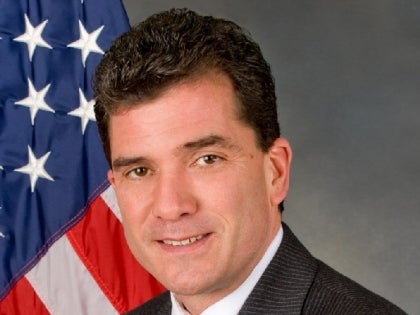Doctors, pharmacists, regulators, lawmakers and parents who lost children to prescription drug addictions all agreed Monday that the state needs to take steps this year to address what is becoming a growing epidemic.
What those solutions could entail is still a ways off, as was made clear in a round-table discussion at the State Capitol hosted by Senate Republicans.
Still, several families involved in the effort left Albany confident.
“I am very encouraged by what I’m seeing here today,” testified Avi Israel, whose son Michael, addicted to prescription drugs, killed himself in his Buffalo home last year.
“Something is going to happen because of what just happened in this room,” Suzanne Crotty, of Colden, added after the more than two-hour session broke. Crotty, whose son Zach died in 2009 from a prescription drug overdose, began local efforts to improve how prescription drugs are dispensed in New York.
At issue is a range of proposals such as how to improve the reporting of drugs being prescribed so that physicians and doctors can get more current information on what their patients are taking and how to improve the education of physicians in pain management.
“Treating pain is not mysterious,” said Dr. Joseph Sacco, a palliative medicine expert at Bronx-Lebanon Hospital Center.
Sacco said that the state’s prescription drug reporting system should be improved but that New York might also consider mandatory education for physicians to ensure more timely information about drugs and addictions. “Patients are suffering,” he said.
Every 45 days, pharmacists have to report information to the state Department of Health about certain prescriptions dispensed to patients. But, according to Tomson George, manager of pharmacy regulatory systems at Walgreen Co., New York is only one of eight states that do not require that information to be reported at least weekly. Two states require it daily, and one — Oklahoma — has a “real-time” reporting system so that pharmacists and doctors can see whether controlled substances are being overprescribed to patients.
People testifying Monday also said the state’s Medicaid prescription drug reporting system is far more current and complete when it comes to tracking drugs such as painkillers and sleeping pills for Medicaid recipients than for patients in private insurance or with no insurance.
The real-time reporting push was bolstered last year when Attorney General Eric T. Schneiderman introduced a bill to improve the state’s now-cumbersome and little-used system — one that pharmacists are unable to access and is only voluntary for physicians when prescribing medications.
Schneiderman asked New Yorkers to share and read about stories of prescription drugs.
A leading physician is worried about adding another mandate to the workload of doctors. Dr. Donald Moore, of New York City, a vice chairman of the Health Technology Committee for the Medical Society of the State of New York, said that physicians do not have enough time now with their patients and that adding mandatory reporting checks to the workday will further reduce that time.
Physicians are also worried that efforts to sanction doctors who do not abide by a reporting system will put a chilling effect on getting drugs to patients who need them. “We don’t want to fix the problem by shutting out the 98 percent of physicians and patients who are doing it correctly,” Moore said.
But Terence J. O’Leary, the Cuomo administration’s director of narcotics enforcement at the Department of Health, said the state’s 45-day reporting system “can be useless information.” He said Gov. Andrew M. Cuomo is looking at a comprehensive set of ideas to combat the worsening drug problem.
O’Leary, a former drug prosecutor, added that “shopping” for doctors and pharmacists is worsening in New York, with patients either feeding their own addiction or trying to get opiates and other narcotics to sell on the black market.
In addition, he said, law enforcement interest in the problem has risen sharply. In 2009, about 700 requests were made by law enforcement agencies to obtain information from the Department of Health prescription drug database; it went up to about 2,300 last year. “It indicates law enforcement is taking this problem seriously, as well,” O’Leary said in an interview.
Paul J. Mahoney, the assistant deputy attorney general in charge of the state’s Medicaid fraud unit, said that there are “too many breaks in the chain” in the system of dispensing and prescribing drugs. He pushed for Schneiderman’s reporting bill and for holding “bad-faith doctors” more accountable for the drugs they prescribe.
Later Monday, the Senate approved a four-bill package to place additional controls at pharmacies on several addictive painkillers, including hydrocodone, and increase penalties for doctors and pharmacists who illegally divert prescription drugs. So-called pill mills, which dispense large amounts of painkillers and other controlled substances, would come under new scrutiny. Another bill would criminalize the sale of controlled substances to a minor younger than 14.
The round table included several lawmakers from Western New York: Sens. Mark J. Grisanti, R-Buffalo; George D. Maziarz, R-Newfane; and Timothy M. Kennedy, D-Buffalo.
After the hearing, Senate Health Committee Chairman Kemp Hannon, a Long Island Republican who hosted the event, said a growing consensus is emerging that new steps need to be taken in this year’s legislative session to control the prescription drug problem.
“I have a greater sense of the intractable nature of curing the addiction to opiates,” he said. “It’s much more distressing than I thought.”
http://www.buffalonews.com/city/special-reports/rx-for-danger/article730339.ece




